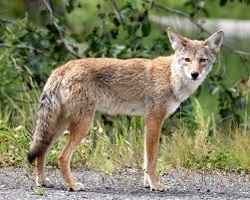Watering New Plantings.
Your soil has now been well and properly prepped/improved and has good moisture holding capacity.
There is no simple rule for when and how much water to give to plants, though no watering can spell disaster for newly planted shrubs, trees and perennials.
The best means of determining when and how much water to give plants is to literally stick your finger in the ground next to plants, below the mulch into the top inch of good soil. Is it damp? Wet? Dry?
Water plants well if they are dry. That means about a gallon of water around the base of each small plant, and 2-3 gallons of water around the base of shrubs and small trees.
If you were to do this every other week when there has been no significant rainfall than I imagine your plants would be in great shape. A quarter-inch of rainfall is a good rain.
Supplemental watering is critical for the first 2-3 months a plant has been put into the ground in spring, and during warm summer months. By fall most of these plants will have healthy, vigorous root systems and capable of mining the soil for their own moisture other than in extreme dry conditions where there has been no significant rainfall for three weeks or longer.
I like to use a watering wand. It is a 2-3 foot long aluminum pipe with a slight bend in it near the spray head. The spray head is about one inch x one inch cylinder with a lot of small holes that produces a nice gentle flow of water like a low-flow showerhead. Better ones will have a shut-off valve at the other end of the pipe and easily attach to your garden hose. The aluminum pipe allows you to easily tuck the spray head under shrubs directing the water to the roots where its suppose to go. Watering the foliage of a plant serves no purpose, is a waste of water and can lead to diseases such as leafspot and powdery mildew.
Morning waterings are preferred to other times. But if the plants are stressed from dryness immediate watering is better than waiting for the ideal time of day.
Your soil has now been well and properly prepped/improved and has good moisture holding capacity.
There is no simple rule for when and how much water to give to plants, though no watering can spell disaster for newly planted shrubs, trees and perennials.
The best means of determining when and how much water to give plants is to literally stick your finger in the ground next to plants, below the mulch into the top inch of good soil. Is it damp? Wet? Dry?
Water plants well if they are dry. That means about a gallon of water around the base of each small plant, and 2-3 gallons of water around the base of shrubs and small trees.
If you were to do this every other week when there has been no significant rainfall than I imagine your plants would be in great shape. A quarter-inch of rainfall is a good rain.
Supplemental watering is critical for the first 2-3 months a plant has been put into the ground in spring, and during warm summer months. By fall most of these plants will have healthy, vigorous root systems and capable of mining the soil for their own moisture other than in extreme dry conditions where there has been no significant rainfall for three weeks or longer.
I like to use a watering wand. It is a 2-3 foot long aluminum pipe with a slight bend in it near the spray head. The spray head is about one inch x one inch cylinder with a lot of small holes that produces a nice gentle flow of water like a low-flow showerhead. Better ones will have a shut-off valve at the other end of the pipe and easily attach to your garden hose. The aluminum pipe allows you to easily tuck the spray head under shrubs directing the water to the roots where its suppose to go. Watering the foliage of a plant serves no purpose, is a waste of water and can lead to diseases such as leafspot and powdery mildew.
Morning waterings are preferred to other times. But if the plants are stressed from dryness immediate watering is better than waiting for the ideal time of day.

 RSS Feed
RSS Feed